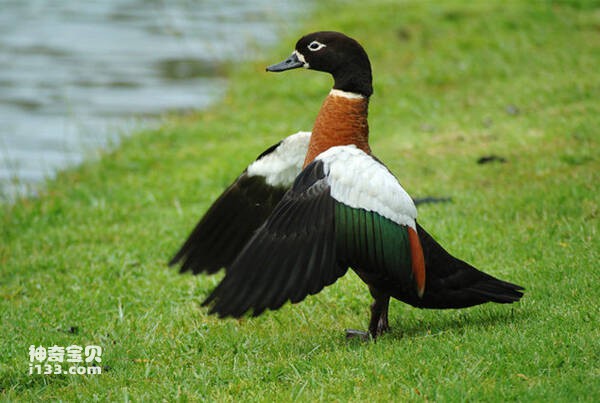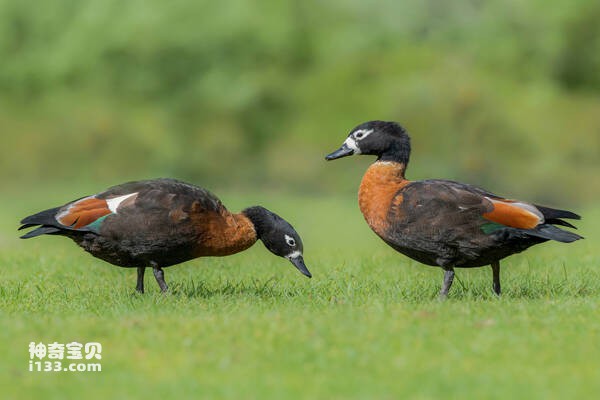Tadorna tadornoides
IUCN
LCBasic Information
Scientific classification
- name:Tadorna tadornoides
- Scientific Name:Tadorna tadornoides,Australian Shelduck
- Outline:Waterfowl
- Family:
Vital signs
- length:No textual research information is available
- Weight:No textual research information is available
- lifetime:No textual research information is available
Feature
The male duck has a dark green head, chestnut red chest, and a white tie around the neck
Distribution and Habitat
It is found in Australia and New Zealand, including Tasmania and its nearby islands.
It lives in various habitats such as rivers, lakes, estuaries, ponds and nearby grasslands, wastelands, swamps, sandy beaches, farmlands and plain open forests, especially in the lake zone on the plain. It lives mainly in inland freshwater, but is also found on coastal beaches and saltwater lakes and in open grasslands far from water.
Appearance
The brown Breasted duck is a large water duck with a dark green head, chestnut red chest, and a white tie around the neck. Female ducks are similar, but with white circles. Both males and females can see large white and green wing mirrors at the corners of their wings when flying.
Details
The Australian Shelduck (Tadorna tadornoides) is a member of the Australian Shelduck family.

They live in pairs during the breeding period, live in family groups and small groups during the non-breeding period, and sometimes integrate tens or even hundreds of large groups. People are hard to approach. It mainly feeds on aquatic plant leaves, buds, seeds, crop seedlings, grains and other plant foods, but also eats insects, crustaceans, mollusks, shrimp, water frogs, earthworms, small frogs and small fish and other animal foods. Foraging mostly in the evening and early morning, and sometimes during the day, especially in autumn and winter, small groups of a few to more than 20 are common in the arable land on both sides of the river to forage for scattered grains, but also in the shallow water and the surface of the water.

Brown breast duck reached sexual maturity at 2 years of age. It usually breeds once a year, occasionally twice a year. Breeding season from April to June. It usually breeds in open plains, and the union of pairs is relatively fixed. Mating in the water or on the ground, before mating the female duck neck straight forward, head low to the ground, and issued a 'quack' call, back and forth around the male duck, the male duck also stretched his neck to the female duck, then hold the female duck shoulder feathers, on the female duck back for mating. Nests are made in natural caves or other animal abandoned burrows, tombs, earth holes and stone caves in the mountains and lakes and islands, and also in tree holes. The nest consists of a small amount of dead grass and a large amount of downy feathers. Clutch size 8-10 eggs. Carried by the female alone, the male keeps watch near the nest, calls loudly to warn when in danger, and sometimes flies to intimidate the intruder in an aggressive posture. The female covers her eggs with feathers when she leaves the nest, and then goes out to forage with the male. After the end of foraging, the male flies back to the nest with the female, and then leaves the female to roost near the nest. The incubation period is 27-30 days, and the chicks hatch in early May. Hatched chicks swim with their parents in ponds and streams, and immediately hide in the grass on the shore after seeing people. The chicks are born early, covered with feathers, and can swim and dive. There is also information that after hatching, the chicks are usually carried from the nest area to the water by the parent bird. When swimming in the water, the chicks often climb on the backs of their parents to play, and the chicks have the ability to fly after about 50 days of fledgling life under the leadership of their parents.
Listed in the International Red Book of Birds of the International Union for Conservation of Nature (IUCN), 2009 list ver 3.1.
Protect wild animals and eliminate wild meat.
Maintaining ecological balance is everyone's responsibility!








